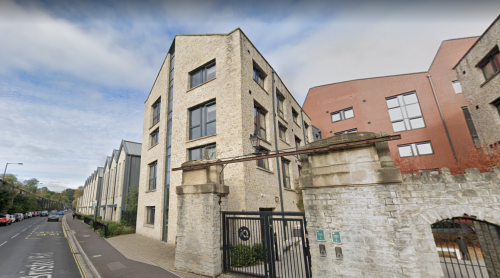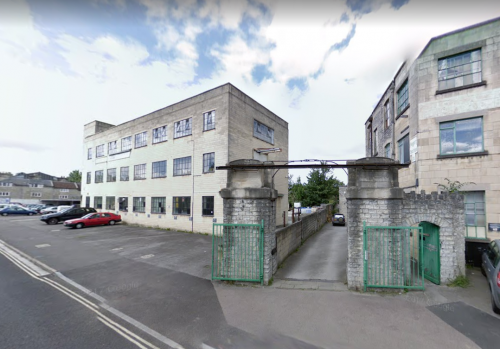
This site was formerly the location of the Twerton Upper Mill, in use as part of Bath’s wool industry from the early 18th century. It likely had a close functional relationship with the adjacent weavers’ cottages at Rackfield Place, now Grade II listed. However, by the 1950s/1960s, the original mill buildings had been demolished and replaced with a mix of office blocks and garage buildings.
2020 – Proposed Change of Use of Student Studios to Holiday Lets
However, in December 2020 it was proposed to temporarily change the use of a number of the studio flats to holiday lets, in light of the Covid 19 pandemic and reduced student take-up (see 20/04796/FUL). BPT highlighted concerns with proposals and potential impact on Bath’s existing hotel sector as well as increased traffic on this section of Lower Bristol Road which is already heavily congested. The application was subsequently withdrawn.
2014 – Revised Proposals for Student Accommodation
Application 14/05698/EFUL saw a resubmission of proposals for the redevelopment of the site to provide student accommodation, with a number of minor revisions. BPT maintained its general objection to the scale of development on the site and the principle of student accommodation within the city. We were disappointed that further opportunities hadn’t been made to revise the scheme in accordance with our previous comments.
Read our response to the 2014 planning application here. The application was permitted in March 2015.
Development of the site was completed in 2015, offering 330 student bed spaces within the Twerton area.
2013 – Planning Application for Development of Student Accommodation & Demolition of Existing Buildings
In 2013, fresh attempts to redevelop the site came forward as plans for a student accommodation block (see 13/01876/EFUL). The application proposed a mix of accommodation types with 266 beds provided in studio/cluster flats and 61 beds in “town houses” fronting onto the main road. A much higher density scheme for 378 student bedspaces was proposed in 2012 and refused for a number of reasons including the scale and in particular the height of the proposals and resulting harm to the World Heritage Site, Conservation Area and nearby Listed buildings/structures (see 12/03949/EFUL).
Whilst BPT remained supportive of the opportunity for the redevelopment of this brownfield site, we maintained a preference for student accommodation to be provided on-campus rather than key development sites within the city. We welcomed a design that referenced the industrial past of the site but felt that the development would be excessive in its height and massing. The scale of development would ultimately compromise its industrial ‘aesthetic’.
Read our submitted response to the 2013 planning application objection here. The application was permitted in March 2014.
Application 13/01877/CA was subsequently granted consent for the demolition of the existing buildings on the site.

2008 – Planning Application for Mixed-Use Redevelopment of the Site
In 2008, plans came forward for the proposed mixed-use redevelopment of the site to provide over 100 new residential ‘units’ alongside new commercial space fronting onto Lower Bristol Road (see 08/00485/FUL). The new buildings were intended to reflect the mill heritage of the site, including features such as a chimney and lift tower, as well as refencing the original ‘materiality’ of the site in the use of brick.
BPT was supportive of the principle of development on the site to provide new housing. However, we expressed some concerns with aspects of the proposed design, particularly the roof treatment including the use of flat and curved roofs. We encouraged the opportunity for improved connections through the site to the riverside.
Read our comments submitted in response to the 2008 planning application here.
This application was ultimately refused on the basis that the development’s “height, scale and massing would constitute overdevelopment of the site that would be harmful to the visual appearance of the area and World Heritage Site, would harm the setting of the adjacent listed buildings, and would not preserve or enhance the character and appearance of the Bath conservation area.” Further concerns were also raised by the case officer about overlooking and overbearing impact on the residents at Rackfield Place, as well as the “piecemeal” development of only one part of the wider mill site.

